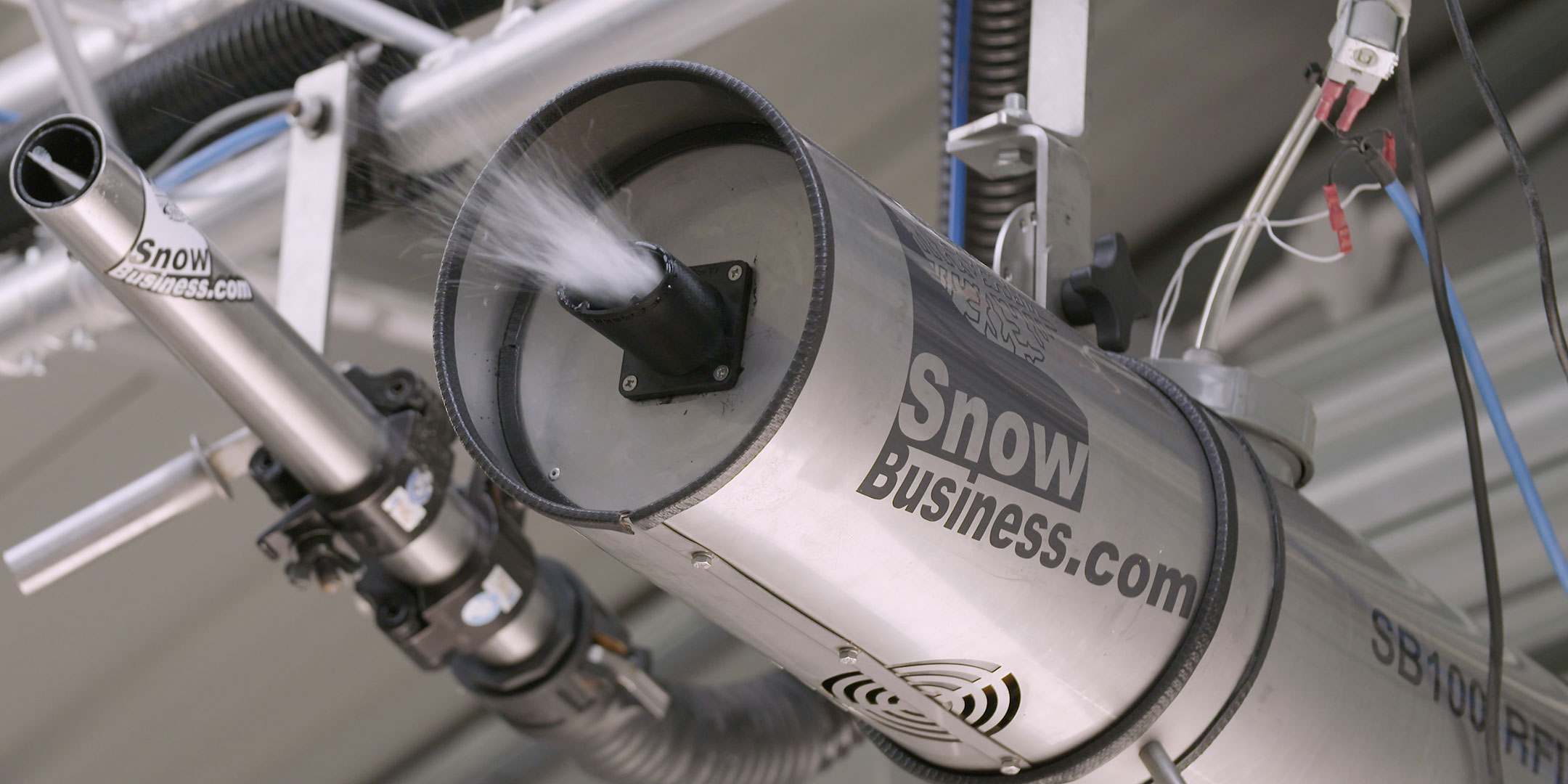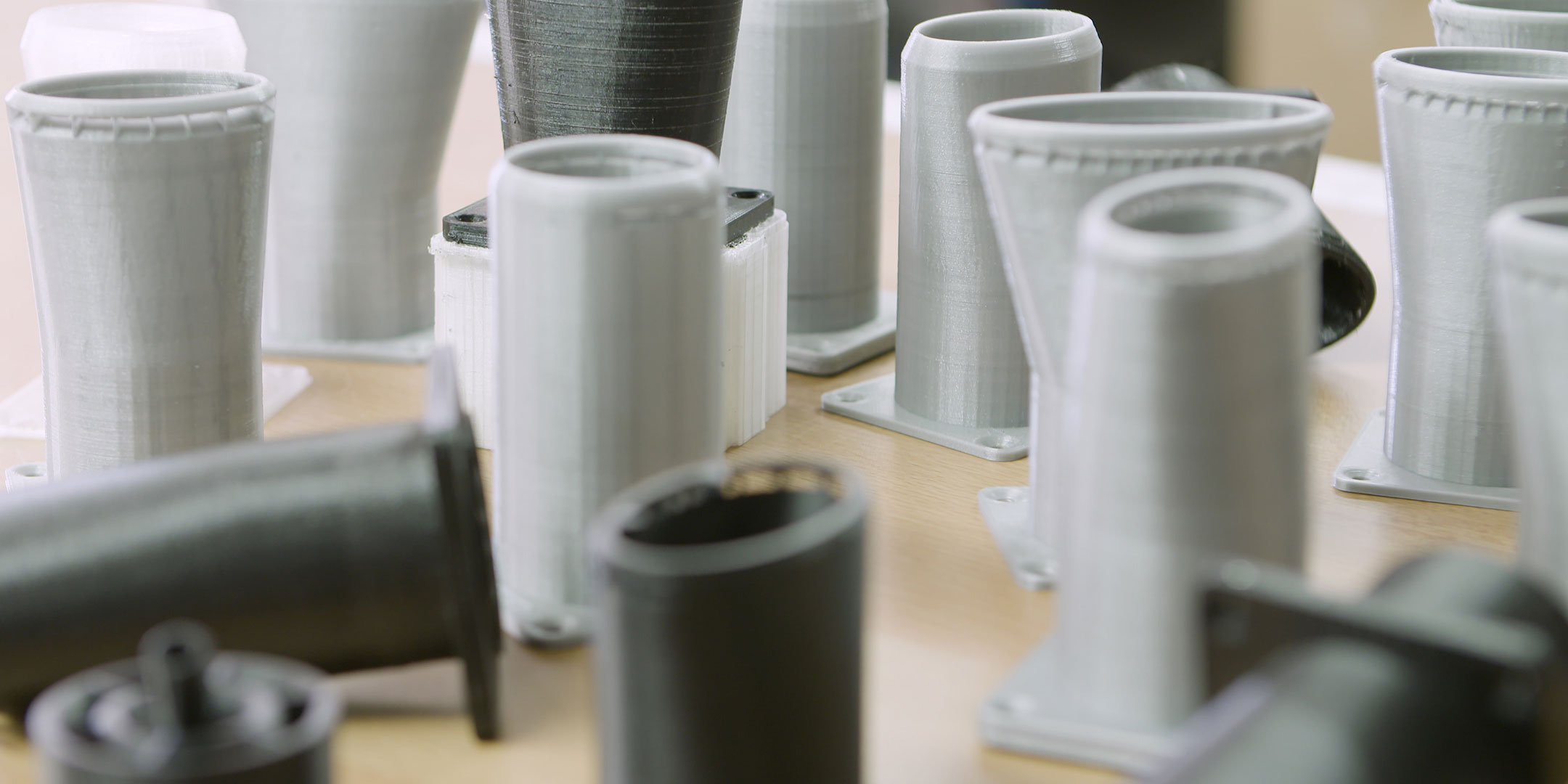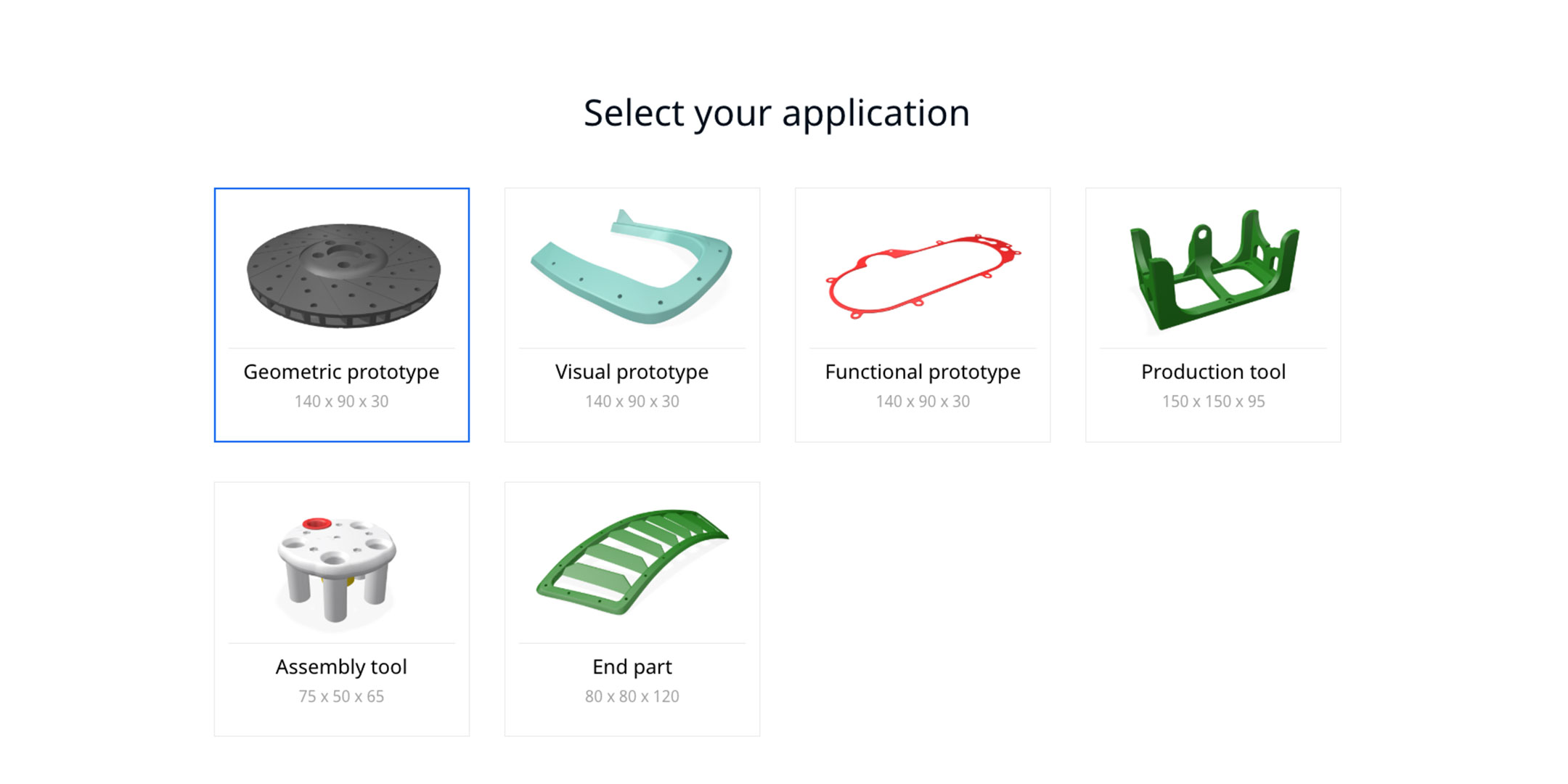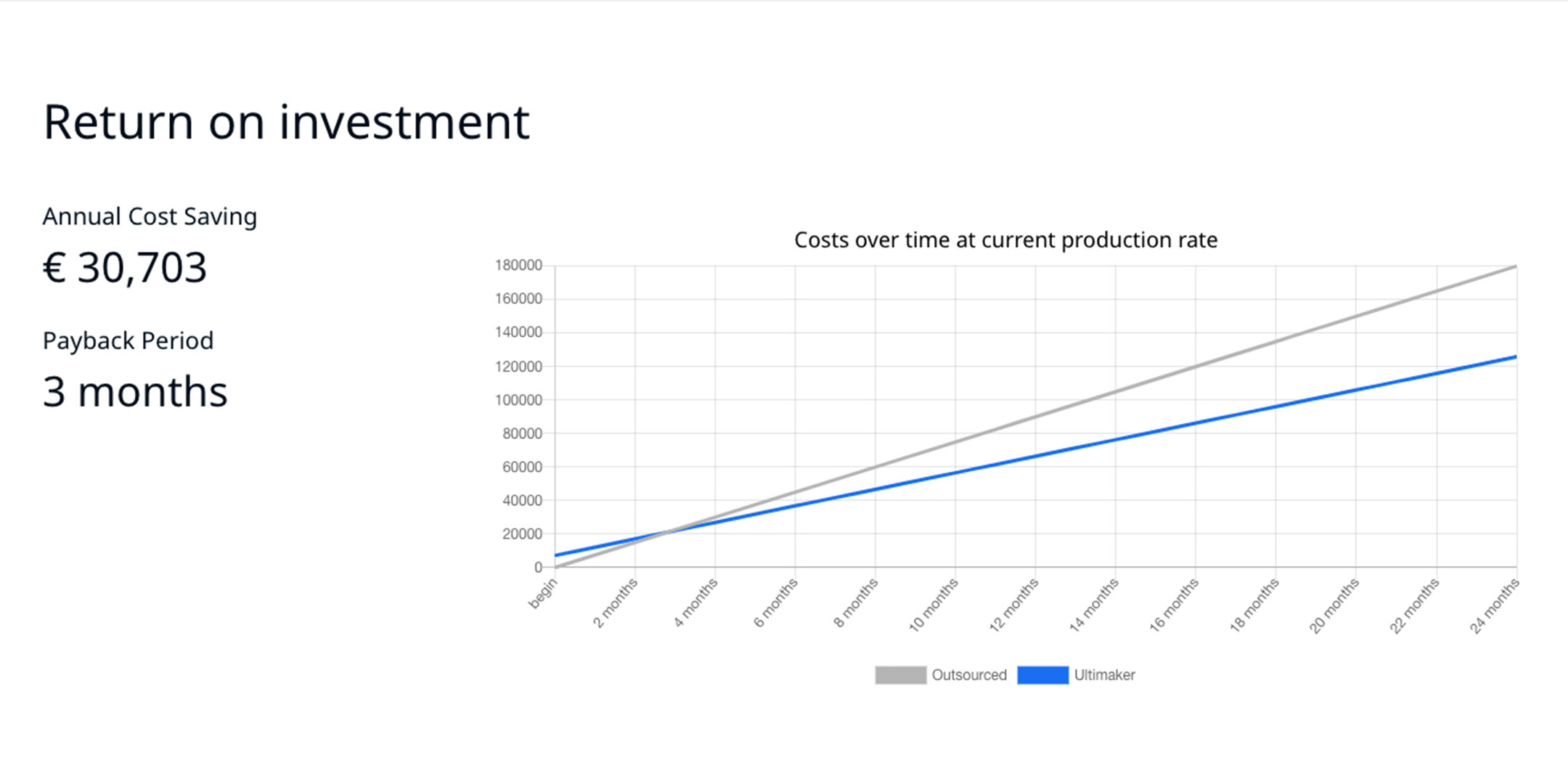Before you can introduce 3D printing into your business, you must prove the technology’s worth – to yourself, to your boss, and to your company’s stakeholders. It is difficult enough to make a convincing argument for moving away from established process to a new, unfamiliar one. Without hard evidence to back you up, it’s next to impossible.
To provide you with this data, Ultimaker has created an ROI calculator. No need for collecting, organizing, and analyzing financial data and other information. Instead, complete an easy, three-step process, tailored to both your needs and Ultimaker 3D printers. Before doing so, however, it’s important to understand exactly what 3D printing can bring to the table.
Why invest in 3D printing?
Compared to traditional manufacturing methods, 3D printers are cost-efficient and convenient. They allow for quick, on-demand, inexpensive production of models, functional prototypes, factory floor-ready tools – even end-use parts.
By purchasing and using a high-quality 3D printer, you can begin to bring the entire manufacturing process to your place of business. Additionally, the ‘always on’ availability of 3D printers creates a workplace culture of continuous improvement, in which ideas are able to constantly be tested and, when successful, immediately implemented.
Snow Business International, which develops snow machines for the film industry, saves more than $100 per iteration using 3D printing
Comparing costs
While the cost of investing in professional 3D printing will be higher than outsourcing prototypes or customized parts, it has the potential to greatly increase capacity and throughput, if efficiently managed. And the technology’s scalability – you can easily start out with one 3D printer and build from there – gives you more control over your production capabilities.
3D printing should also be compared to in-house processes such as stereolithography (SLA), selective laser sintering (SLS), computer numerical control (CNC), and injection molding, each with different pros and cons. You should carefully consider these before making a final decision – especially when you are attempting to achieve the highest ROI possible. You can find more information regarding the costs of specific in-house processes in our white paper, "The ROI of 3D Printing".
3D printed nozzles for use with Snow Business' snow machines
The ROI calculator
Ultimaker’s three-step ROI calculator can currently provide information for eight industries, from automotive to education. First, select your industry, then an application from the provided options.
The ROI calculator's application selection menu for the automotive industry
To provide an accurate comparison with your current method of manufacturing, input your cost per part and labor cost per part, as well as lead time and annual production needs.
Select your currency and click 'Generate report'. The report will be automatically generated, with a graph displaying your ROI, plus an overview of annual cost savings and your payback period – the time it will take you to earn back your initial investment. You will also be able to see information regarding the time and money you will save with 3D printing.
Part of a generated ROI report
The report is immediate, fast, and accurate. After it is created, you have the option of emailing it to yourself or another member of your company. You can also get in touch with Ultimaker, should you have any questions.
Ready to start saving time and money?



























